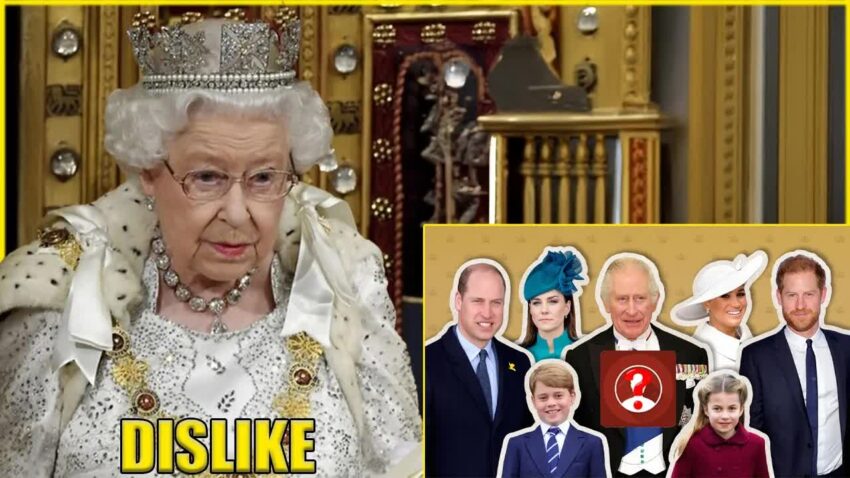Queen Elizabeth II’s reign, which began on February 6, 1952, was marked by her encounters with a multitude of public figures from various backgrounds and nationalities.
Throughout her extensive time on the throne, she was often perceived as gracious and welcoming, yet there were moments when her discomfort was palpable.
This complexity is particularly evident in her relationship with Princess Diana, whose tragic death in a car accident in Paris on August 31, 1997, left an indelible mark on the royal family and the world.
In the wake of Diana’s passing, all eyes turned to the Queen for her response.
Choosing to retreat to Balmoral with her grieving grandsons, she sought solace away from the media frenzy.
Critics questioned this decision, suggesting it was influenced by the long-standing tensions stemming from Diana’s tumultuous relationship with Prince Charles.
However, Canadian author Ingrid Seward offers a different perspective, arguing that the Queen was genuinely mourning and not simply mired in her feelings.
Royal historian Matthew Dennison supports this view, suggesting that the Queen harbored a certain sympathy for Diana.
Rather than feeling anger, the Queen’s reaction was one of profound sadness.
Still, it’s important to note that the Queen found some of Diana’s behavior perplexing and occasionally troubling.
As Seward points out, the visits from Diana became increasingly unwelcome for the Queen over time.
The narrative surrounding the Queen’s interactions with other prominent figures, such as Jackie Kennedy, adds another layer to this royal tapestry.
In a notable episode from the series “The Crown,” the fictionalized depiction of Jackie criticizing the Queen as cold and ignorant provides a dramatic lens through which we can examine these relationships.
However, Geordie Gregg reminds us that there is no concrete evidence to suggest that Jackie held such disdain for the Queen.
Political dynamics also played a significant role in the Queen’s relationships, particularly during her encounters with figures like Vladimir Putin.
An amusing anecdote from 2003 reveals a moment of levity when the Queen commented on the peculiar instincts of dogs after a guide dog barked at the Russian leader.
This light-hearted exchange showcased her ability to maintain humor even in politically charged situations.
The tension between Queen Elizabeth and Meghan Markle, the Duchess of Sussex, has also drawn considerable media attention.
Despite Meghan stepping back from royal duties, her political inclinations have raised eyebrows, particularly given the Queen’s constitutional obligation to remain neutral.
Meghan’s public calls for legislative change during the pandemic further complicated their relationship, with the Queen reportedly feeling a mix of sadness and concern over the rift.
Former U.S. President Donald Trump’s visit in June 2019 added yet another layer of complexity to the Queen’s interactions with world leaders.
His controversial helicopter landings on Buckingham Palace grounds left lasting damage to the pristine lawns, much to the Queen’s dismay.
During a subsequent meeting with Australian Prime Minister Scott Morrison, she humorously lamented the state of her lawn, reflecting her down-to-earth character amid royal decorum.
The Queen’s relationship with her son Prince Charles and his marriage to Camilla Parker Bowles has also been fraught with tension.
Initially, the Queen was hesitant about Camilla, reportedly expressing her disdain for her role as the “other woman” in Charles’s life.
However, as time passed, the Queen’s attitude softened, demonstrating the capacity for change within royal sentiments.
The dynamics of the monarchy extended to figures like Boris Yeltsin, whose visit in 1992 was one of the few times the Queen left the U.K. during her reign.
The scrutiny surrounding Yeltsin’s actions during this visit highlighted the challenges the Queen faced in managing international relations while maintaining her royal composure.
As Queen Elizabeth II’s reign came to a close, the world mourned her passing, reflecting on the legacy she leaves behind.
Her connections with various personalities—both celebrated and controversial—paint a complex picture of her life as a monarch.
The tributes that poured in from global leaders following her death underscored the significant impact she had on the monarchy and the world stage.
In examining the myriad relationships Queen Elizabeth navigated throughout her life, we gain insight into the human side of a figure often seen as a distant symbol of authority.
Her ability to balance duty with personal emotion, humor with formality, and tradition with modernity defines her remarkable legacy.
How future generations will interpret her story remains to be seen, but her influence will undoubtedly resonate for years to come.
